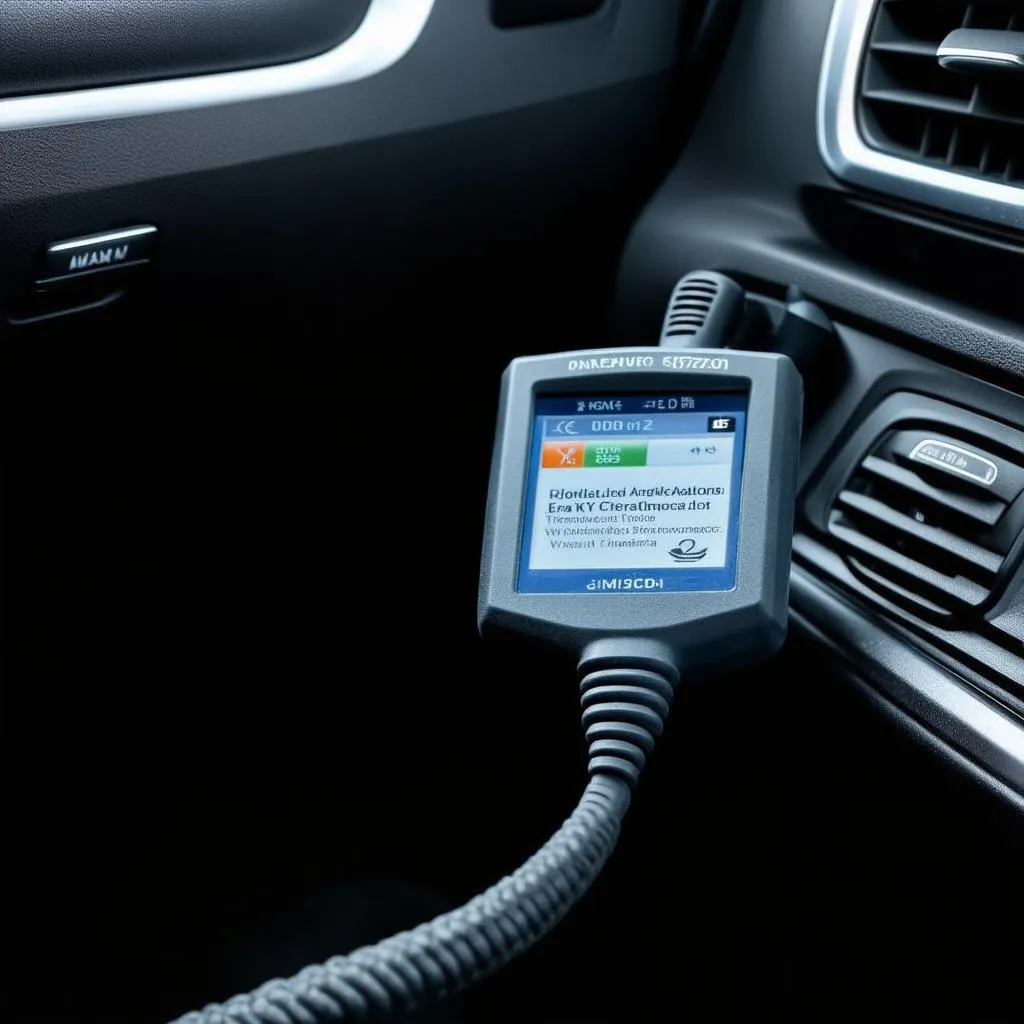Have you ever been in the market for a used car and felt a twinge of doubt about the mileage? You see a shiny Honda Accord on a used car lot in Los Angeles, and it looks pristine, but something feels off. Could the odometer be hiding a few thousand (or tens of thousands) of miles? It’s a common concern, but luckily, technology provides a way to gain more confidence in your purchase: the automotive scan tool.
Decoding the Mileage Mystery: Why It Matters
Before we delve into the “how”, let’s understand the “why”. Checking a vehicle’s mileage with a scan tool is about more than just satisfying curiosity. It’s about gaining crucial insights into a car’s history and potential future.
For Mechanics and Enthusiasts:
As a seasoned mechanic, I often use my scan tool to verify the mileage on vehicles brought into my California repair shop. This helps me:
- Diagnose issues: Inconsistent mileage readings across different modules can point towards electrical problems or even odometer tampering.
- Estimate maintenance: Knowing the accurate mileage allows me to recommend appropriate maintenance schedules for components like timing belts, spark plugs, and transmission fluid.
For Buyers and Sellers:
- Buyers: A scan tool can help you avoid purchasing a vehicle with a rolled-back odometer, saving you from potential headaches and financial losses down the road.
- Sellers: Providing potential buyers with a scan tool report showing accurate mileage can build trust and expedite the selling process.
Unmasking the Odometer: How Scan Tools Reveal the Truth
Modern vehicles, whether it’s a sleek German Audi A4 or a rugged American Ford F-150, store mileage data in multiple electronic control units (ECUs). A scan tool, particularly a higher-end one like those used by dealerships for European cars, can access these ECUs and retrieve mileage information.
Here’s a simplified breakdown of how to use a scan tool to check vehicle mileage:
- Connect: Plug the scan tool’s OBD-II connector into your vehicle’s OBD-II port (usually located under the dashboard on the driver’s side).
- Power Up: Turn on the vehicle’s ignition (you don’t need to start the engine in most cases).
- Access Mileage Data: Navigate the scan tool’s menu to find the “Mileage,” “Odometer,” or “Instrument Cluster” section. The exact wording may vary depending on the scan tool brand and model.
- Compare Readings: Note the mileage readings from different modules (e.g., engine control module, instrument cluster, transmission control module). Discrepancies might indicate odometer tampering.
Pro Tip from Johnathan Miller, author of “Automotive Diagnostics: Unlocking the Secrets”: “While a scan tool is a powerful tool, it’s not foolproof. Odometer fraud techniques have become increasingly sophisticated. If you suspect tampering, it’s always best to consult with a trusted mechanic specializing in automotive electronics.”
Addressing Common Questions About Scan Tools and Mileage
Can any scan tool check mileage?
Not all scan tools are created equal. Basic OBD-II scanners might only display the mileage stored in the instrument cluster, which can be manipulated. More advanced scan tools, like those used by dealerships and professional mechanics, can access data from multiple modules, providing a more comprehensive view.
Can I rely solely on a scan tool to detect odometer fraud?
While a scan tool is a valuable tool, it’s not a guaranteed method for detecting odometer fraud. Physical inspection for wear and tear inconsistent with the displayed mileage, reviewing vehicle history reports, and consulting with a trusted mechanic are crucial steps in making an informed decision.
Are there specific scan tools you recommend for checking mileage?
Choosing the right scan tool depends on your needs and budget. For casual users, a Bluetooth OBD-II scanner paired with a smartphone app might suffice. Professionals and serious DIYers might opt for higher-end models from brands like Autel, Launch, or Snap-on.
Beyond Mileage: Other Insights from Your Scan Tool
A scan tool is a versatile tool that can reveal much more than just mileage. You can use it to:
- Read and clear diagnostic trouble codes (DTCs): Identify potential engine, transmission, airbag, or ABS issues.
- View live data streams: Monitor engine parameters like RPM, coolant temperature, and oxygen sensor readings in real-time.
- Perform special functions: Depending on the scan tool and vehicle model, you might be able to perform tasks like resetting oil service lights or activating ABS solenoids.
Still Have Questions About Your Vehicle’s Data?
We understand that navigating the world of automotive diagnostics can be daunting. That’s why we’re here to help! If you’re unsure about interpreting scan tool readings or need assistance with any other car-related issues, don’t hesitate to contact our team of expert mechanics via WhatsApp at +84767531508. We’re available 24/7 to provide guidance and support.
Dive Deeper into Automotive Diagnostics
Interested in learning more about scan tools, odometer readings, or other automotive topics? Check out these related articles on our website:
- Does AutoZone Scan Tool See Odometer?
- Best Bluetooth OBD2 Scanners
- Is There a Scan Tool That Can Verify Odometer Readings?
Remember, knowledge is power when it comes to car ownership. Equipping yourself with the right information and tools can help you make confident decisions and keep your vehicle running smoothly for miles to come.



